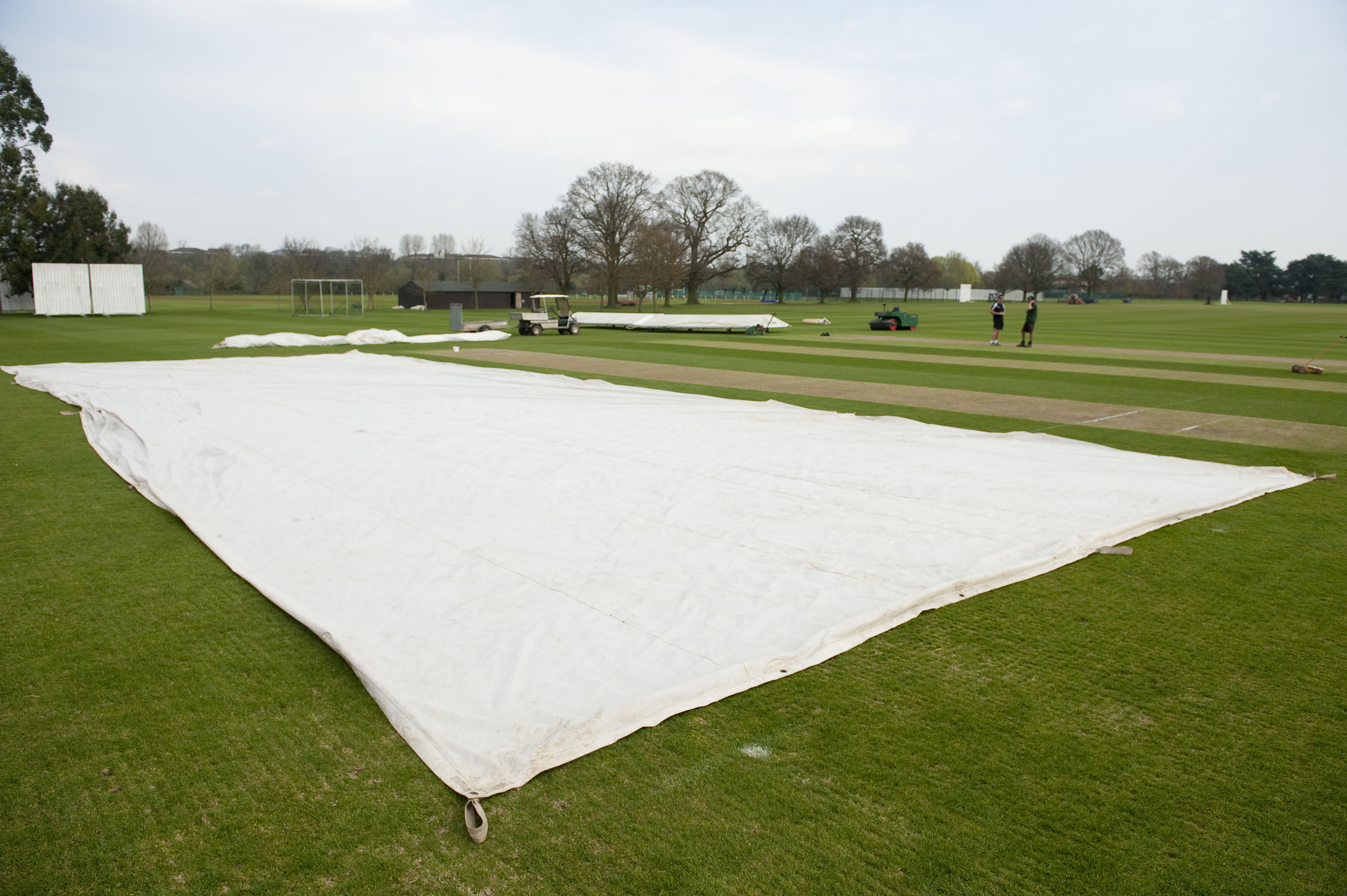If there is a slope, water will flow downhill from the cover or onto the cover.
Mobile covers have the advantage of guttering and hoses to channel water away from the pitch to more freely draining, less sensitive areas. There are still some rules to remember:
- Make sure the hoses are draining downhill, away from the square. Check that the hose outlets are below the pitch and any areas of the square you are trying to protect from water – otherwise water will flow back towards the cover or the areas you are trying to keep dry.
- Do not put the hose outlets on the square – outfields drain better than compacted clay loam squares so drainage rates will be better out on the outfield. If you discharge onto the square, you risk delays – particularly if the water gets on to bare ends. Remember the flow is more concentrated than rain falling on the square.
- Do not put the hose outlets on run ups because you do not want water to pond in these areas.
- Do not direct several hose outlets into one spot.
- Some grounds have ring drains around the square. If you have gully pots feeding directly into that ring drain, you can divert water from the hoses straight into the drainage system.
- Make sure your gutters are clean and the hoses are not blocked – especially if your covers are parked under trees or hedgerows when they are off the field.
On flat sheet covers, water will pond if there is only a small amounts of surface fall on the square, or if worn ends are lower than the surrounding square level. Water on flat sheet covers should be pushed off or preferably soaked up using a water removal roller and disposed of in a free draining area.
Once the water has been removed, the covers can be removed and stored beyond the boundary. In drier weather – try to dry out the cover rather than leave it sitting with water in it – this will help prolong the life of the cover and make it easier to deploy next time it is needed.


 Tweet
Tweet